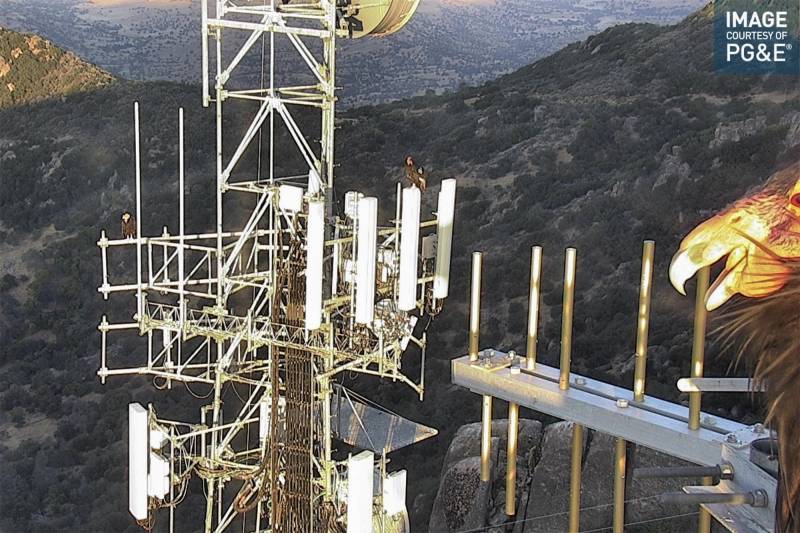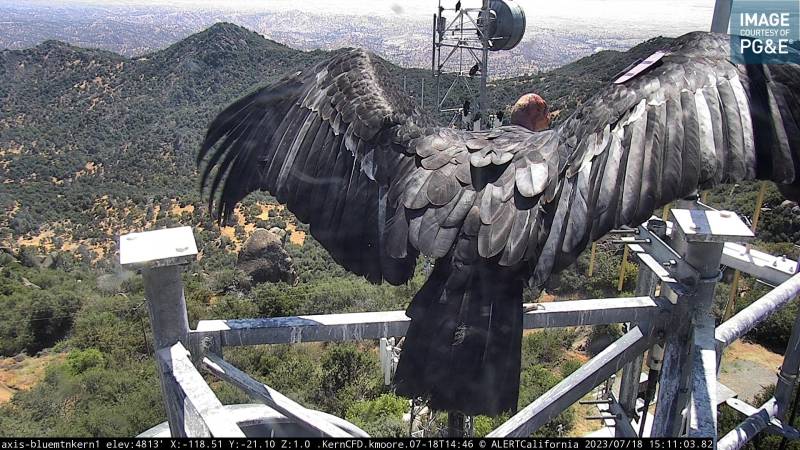Updated 2 p.m. Thursday
U
p in the higher reaches of the southern Sierra Nevada foothills, a cool piece of modern technology is giving a close-up look at an ancient marvel of California’s skies.
On Tuesday, a wildfire camera on a mountaintop 30 miles northeast of downtown Bakersfield captured a group of as many as 10 California condors roosting at a communications tower there.
One bird in particular, a 7-year-old female designated alternately as Condor 811 or “Lulutti,” put on a bit of a show. She stared straight into the camera at one point to show off her naked, wrinkled, pinkish-red head. Later, she displayed her impressive wingspan and jet-black plumage.
Another member of the flock, a 14-year-old male prosaically named Condor 509, eyeballed the camera as the sun rose over the Sierra Wednesday morning.

Then he and others perching on steel towers festooned with cell transponders and other electronics glided off, presumably to look for a meal. Which, if you’re not familiar with condors’ gastronomic programming, consisted of dead meat. Later Wednesday, at least 14 of the birds had returned to the towers.
(How do we know anything about these wild birds’ biographies? Each of them has a color-coded, numbered tag that allows the casual web condor watcher — or anyone lucky enough to spot Gymnogyps californianus on the wing — to confirm a bird’s identity, life history and family ties on an online database.)
